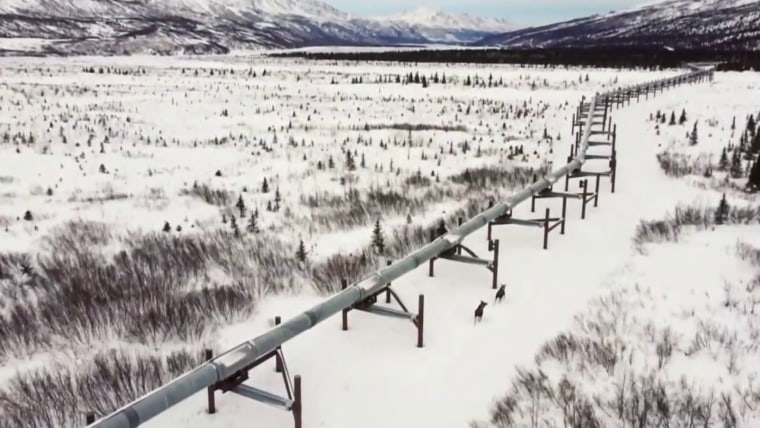The Biden administration’s approval of the Willow oil and gas project on Alaska’s North Slope could commit the U.S. to a 30-year project that will produce greenhouse gas emissions equivalent to more than 1.7 million passenger cars each year.
The lengthy commitment has rankled environmental groups, who see the project as a broken promise and a decadeslong investment in fossil fuels at the same time scientists warn global emissions must decline sharply.
“President Biden’s decision to approve Willow betrays his campaign promises and the millions of young voters who supported him,” Aaditi Lele, the policy director of the youth-led activist organization Zero Hour, said in a statement. “Drilling for new oil and gas is incompatible with the magnitude of the crisis we face.”
The decision about the project, which in recent months has become the subject of growing backlash on social media, almost single-handedly calls into question whether the Biden administration’s broader climate efforts will meet the goals set by international organizations, which are seen as essential to avoid the worst consequences of climate change. It also shows how geopolitical forces are challenging the administration’s ability to abruptly shift away from fossil fuels.
Kristen Miller, the executive director of the nonprofit Alaska Wilderness League, said greenlighting the oil and gas venture is antithetical to the aggressive action needed to slash emissions.
“This decision is a huge step backward,” she said. “The way we manage our public lands for oil and gas has got to be a significant part of the way we address the climate crisis, and America’s Arctic has to be place number one where this is addressed.”
The decision grants the oil producer ConocoPhillips access to three drilling sites on federal land for nearly 200 wells, according to a decision document from the Bureau of Land Management, part of the Interior Department. Over the life of the project, the federal government expects the company to produce about 576 million barrels of oil, which, if burned, would produce the equivalent of about 239 million metric tons of carbon dioxide pollution, the document says.
“It’s going to rank among the largest projects in the United States when it’s done,” said Michael Lazarus, a senior scientist at the Stockholm Environment Institute U.S., adding that the project’s yearly greenhouse gas pollution would be roughly equivalent to 10% of all the emissions produced in Washington state every year.
There’s also concern that the Willow project could be just the start. Construction of oil facilities and roads in that part of Alaska’s North Slope paves the way for future projects.
“The development of this project will result in the construction of a good amount of infrastructure in a remote part of Alaska,” said Michael Burger, the executive director of the Sabin Center for Climate Change Law, making additional drilling projects more feasible.
The Biden administration’s goal is to reduce carbon emissions by at least 50% from 2005 levels by 2030. To limit global warming to 1.5 degrees Celsius — a goal of the Paris Agreement — scientists with the United Nations’ Intergovernmental Panel on Climate Change have said global emissions must peak before 2025 at the latest and decline by 43% by 2030.
The Biden administration said it reduced the size of the project by denying two of five proposed drilling sites, and a source familiar with the decision said the White House did not believe it could legally prevent the project from going ahead.
The White House did not immediately respond to a request for comment about whether the administration believes it can still hit its climate goals.
Lazarus said that the decision to allow the project to move forward could hinder the administration’s goals and that it exemplifies a pattern of governments’ committing to more new fossil fuel infrastructure than global climate agreements should allow, a trend his organization documents in a yearly report.







